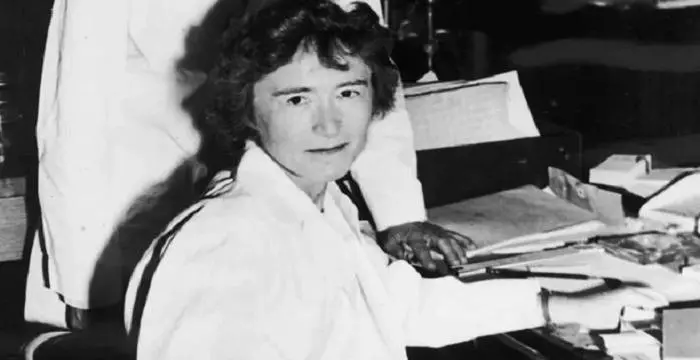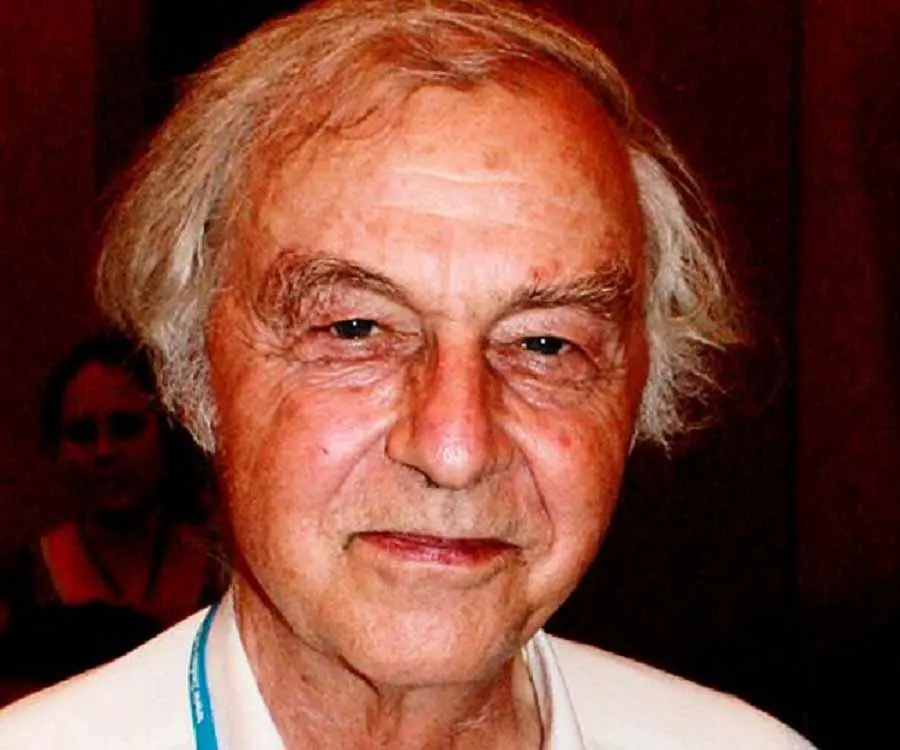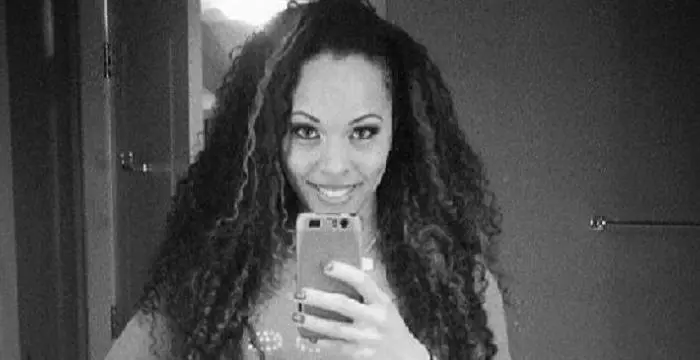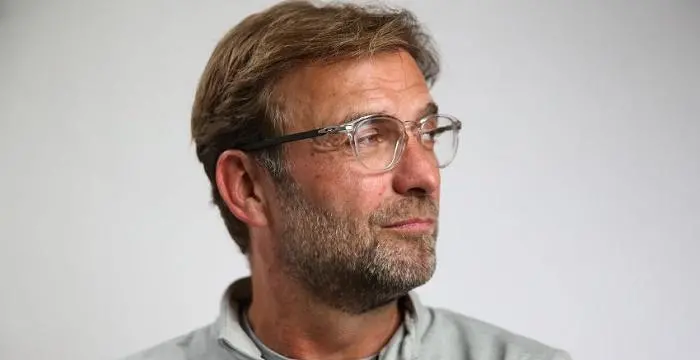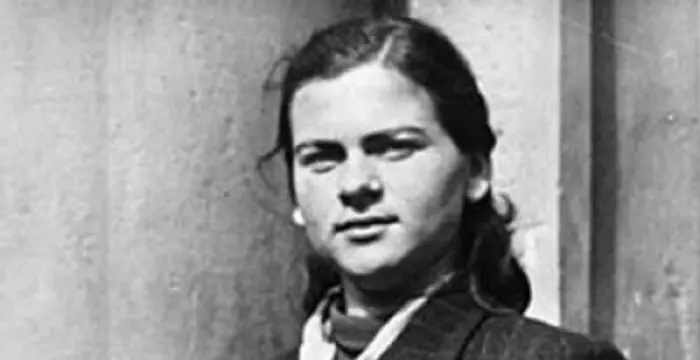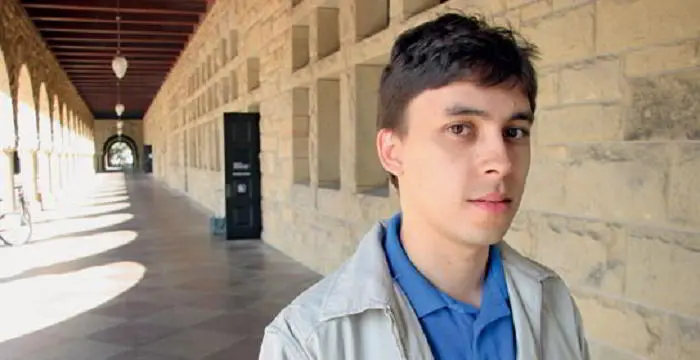
Robert Huber - Scientists, Timeline and Childhood
Robert Huber's Personal Details
Robert Huber is a German biochemist and Nobel Laureate
| Information | Detail |
|---|---|
| Birthday | February 20, 1937 |
| Nationality | German |
| Famous | Scientists, Biochemists |
| Spouses | Brigitte Doleshel, Christa Essig |
| Birth Place | Munich, Germany |
| Height | 181 |
| Gender | Male |
| Father | Sebastian Huber |
| Mother | Helene Huber |
| Net Worth | $197.5 Million as of Feb 27,2017 |
| Sun Sign | Pisces |
| Born in | Munich, Germany |
| Famous as | Biochemist |
// Famous Biochemists
Charles Best
Charles Best was a great scientist and a renowned physiologist who is remembered for being the co-discoverer of insulin. Read this biography to learn about his profile, childhood, life and timeline.
Isaac Asimov
Isaac Asimov was an American professor of biochemistry and a renowned author of science fiction and popular science books. Read this biography to know more about his life.
Gerty Cori
Gerty Theresa Cori was a Nobel Prize winning biochemist who discovered the catalytic conversion of glycogen. To know more about her childhood, career, profile and timeline read on
Robert Huber's photo
Who is Robert Huber?
Robert Huber is a German biochemist who was conferred with the Nobel Prize in Chemistry in 1988 for determining the three dimensional structure of a photosynthesis reaction centre. He shared the prize with Johann Deisenhofer and Hartmut Michel. Raised during the World War II days when survival and daily bread seemed a continuous struggle, Huber did not let the societal problems come in way of his learning. he gained his early education from Humanistisches Karls-Gymnasium. Therein, Huber briefed himself in Latin, Greek, natural sciences and grammar. Huber was first introduced to chemistry during his gymnasium days. Intrigued by the subject, he extensively read all the books on chemistry and soon gained a diploma in the subject. He received his doctorate from Munich Technical University and later joined the Max Planck Institute for Biochemistry at Martinsried, Germany. It was at Max Planck that he conducted his award-winning research with Deisenhofer and Michel. He alternately worked there and at the Munich Technical University. Currently, Huber serves as the Emeritus of Excellence at the Munich Technical University.
// Famous Scientists
Juliane Koepcke
Juliane Koepcke is a German-Peruvian biologist, who was the lone survivor among the 92 passengers and crew of the ill-fated LANSA Flight 508 that crashed in the Peruvian rainforest on 24 December 1971. Know more about her life in this biography.
Henry Cavendish
Henry Cavendish was a theoretical chemist and physicist, renowned for discovery of hydrogen and calculation of the mass of earth. To know more about his childhood, profile, timeline and career read on
Konstantin Tsiolkovsky
Konstantin Tsiolkovsky was a Russian rocket scientist and a pioneer of astronautics. This biography provides detailed information about his childhood, family, personal life, career, achievements, etc.
Childhood & Early Life
Robert Huber was born on February 20, 1937 in Munich, to Sebastian and Helene Huber. His father was a bank cashier. Robert had a younger sister.
Young Huber gained his early education from Humanistisches Karls-Gymnasium from 1947 to 1956. His fascination for chemistry began since then as he read all books on chemistry he could lay his hands on. Later, Huber studied chemistry at the Technische Hochschule, receiving his diploma in 1960.
Upon receiving his diploma, Huber involved himself in research, using crystallography to elucidate the structure of organic compounds. The research work gained him a stipend from the Bayerisches Ministerium für Erziehung und Kultur and later from the Studienstiftung des Deutschen Volkes that took care of his financial problems.
Huber went on to study crystallography under W. Hoppe at the Munich Technical University from where he gained a doctorate degree in 1963; his thesis work was on the crystal structure of a diazo compound.
Career
Robert Huber’s PhD on the crystal structure of a diazo compound influenced much of his future works as he became aware of the power of crystallography. He propelled his career in the same direction, researching on crystallography.
Huber carried out most of his work at Hoppe’s laboratory, working on crystallographic studies of the insect metamorphosis hormone ecdysone and at Karlson’s laboratory at the Physiologisch-Chemisches Institut der Universität München.
During his work at the Karlson’s laboratory, he found by a simple crystallographic experiment the molecular weight and probable steroid nature of ecdysone. This discovery led Huber to continue his research in the field of crystallography.
After a number of structure determinations of organic compounds and methodical development of Patterson search techniques, with the support of Hoppe and Braunitzer, Huber began his crystallographic work on the insect protein erythrocruorin (with Formanek) in 1967.
In 1970, Huber began work on the basic pancreatic trypsin inhibitor. It eventually became the model compound for the development of protein NMR, molecular dynamics, and experimental folding studies in other laboratories.
In 1971, Huber accepted a chair of structural biology at the Biozentrum from the University of Basel and that of a director of the Structure Research department at the Max-Planck Institute for Biochemistry, a position he served until 2005. Simultaneously, he remained associated with the Munich Technical University where he became an adjunct professor in 1976.
Huber spent the first half of the 1970s working on immunoglobulins and their fragments which culminated in the elucidation of several fragments, an intact antibody and its Fc fragment, the first glycoprotein to be analysed in atomic detail. He later extended the work to proteins interacting with immunoglobulins.
Beginning 1980s, Huber began studies of proteins involved in excitation energy and electron transfer, light-harvesting proteins, bilin-binding protein and ascorbate oxidase. It was while studying these that Huber analysed that some of the proteins showed large-scale flexibility. However, the study was not accepted by the scientific community instantly.
In 1985, Robert Huber along with his colleagues, Johann Deisenhofer and Hartmut Michel, successfully determined the three-dimensional structure of the photosynthesis reaction centres for the first time. The discovery was revolutionary as it became instrumental in the understanding of the photosynthetic light reaction as well as numerous ways in which proteins function.
Since 2005, he serves as the Director Emeritus and Head of the research group on Structure Research at the Max Planck Institute of Biochemistry.
In 2013, he was appointed Emeritus of Excellence at the Munich Technical University and has been serving in this position since then.
Major Works
The magnum opus of Huber’s career came in 1980s when he, along with Johann Deisehofer and Hartmut Michel, determined the three dimensional structure of a photosynthesis reaction centre. An internationally recognized expert in the use of X-ray diffraction, Huber determined the atomic structure of complex molecules such as proteins by analysing the manner in which the crystal’s atoms scatter a beam of X rays. Along with his colleagues he used the same technique to determine the structure of a protein complex which is essential to photosynthesis in certain bacteria.
Awards & Achievements
In 1977, Huber was awarded the Otto Warburg Medal.
In 1988, Huber received the prestigious Nobel Prize in Chemistry together with Johann Deisenhofer and Hartmut Michel. The trio were conferred with the prize for their determination of the three-dimensional structure of a photosynthetic reaction centre.
In 1992, he was presented with the Sir Hans Krebs Medal.
In 1993, Huber was elected as a member of Pour le Mérite for Sciences and Arts and in 1999, became a Foreign Member of the Royal Society
Personal Life & Legacy
Huber married Christa Essig in 1960. The couple was blessed with four children, two daughters and two sons. However, Huber and Christa parted ways.
Currently, Huber is married to Brigitte Doleshel.
// Famous Pisces Celebrities peoples
Christine Baumgartner
Christine Baumgartner is an American model and the wife of famous American actor Kevin Costner. Check out this biography to know about her birthday, childhood, family life, achievements and fun facts about her.
Galina Becker
Galina Becker is a former athlete and fitness model from America. Check out this biography to know about her birthday, childhood, family life, achievements and fun facts about her.
Nikkie De Jager
Check out all that you wanted to know about Nikkie De Jager, the famous Dutch Makeup artist; her birthday, her family and personal life, her boyfriends, fun trivia facts and more.
Robert Huber's awards
| Year | Name | Award |
|---|---|---|
Other | ||
| 0 | Nobel Prize in Chemistry (1988) | |
| 0 | ForMemRS (1999) | |
Robert Huber biography timelines
- // 20th Feb 1937Robert Huber was born on February 20, 1937 in Munich, to Sebastian and Helene Huber. His father was a bank cashier. Robert had a younger sister.
- // 1947 To 1960Young Huber gained his early education from Humanistisches Karls-Gymnasium from 1947 to 1956. His fascination for chemistry began since then as he read all books on chemistry he could lay his hands on. Later, Huber studied chemistry at the Technische Hochschule, receiving his diploma in 1960.
- // 1960Huber married Christa Essig in 1960. The couple was blessed with four children, two daughters and two sons. However, Huber and Christa parted ways.
- // 1963Huber went on to study crystallography under W. Hoppe at the Munich Technical University from where he gained a doctorate degree in 1963; his thesis work was on the crystal structure of a diazo compound.
- // 1967After a number of structure determinations of organic compounds and methodical development of Patterson search techniques, with the support of Hoppe and Braunitzer, Huber began his crystallographic work on the insect protein erythrocruorin (with Formanek) in 1967.
- // 1970In 1970, Huber began work on the basic pancreatic trypsin inhibitor. It eventually became the model compound for the development of protein NMR, molecular dynamics, and experimental folding studies in other laboratories.
- // 1971 To 2005In 1971, Huber accepted a chair of structural biology at the Biozentrum from the University of Basel and that of a director of the Structure Research department at the Max-Planck Institute for Biochemistry, a position he served until 2005. Simultaneously, he remained associated with the Munich Technical University where he became an adjunct professor in 1976.
- // 1977In 1977, Huber was awarded the Otto Warburg Medal.
- // 1985In 1985, Robert Huber along with his colleagues, Johann Deisenhofer and Hartmut Michel, successfully determined the three-dimensional structure of the photosynthesis reaction centres for the first time. The discovery was revolutionary as it became instrumental in the understanding of the photosynthetic light reaction as well as numerous ways in which proteins function.
- // 1988In 1988, Huber received the prestigious Nobel Prize in Chemistry together with Johann Deisenhofer and Hartmut Michel. The trio were conferred with the prize for their determination of the three-dimensional structure of a photosynthetic reaction centre.
- // 1992In 1992, he was presented with the Sir Hans Krebs Medal.
- // 1993 To 1999In 1993, Huber was elected as a member of Pour le Mérite for Sciences and Arts and in 1999, became a Foreign Member of the Royal Society
- // 2005Since 2005, he serves as the Director Emeritus and Head of the research group on Structure Research at the Max Planck Institute of Biochemistry.
- // 2013In 2013, he was appointed Emeritus of Excellence at the Munich Technical University and has been serving in this position since then.
// Famous German peoples
Jordan Carver
Jordan Carver is a famous German model. Let’s take a close look at her personal life, including her age, career, net worth, achievements and some fun facts.
Jürgen Klopp
Jürgen Klopp is a German football manager, and a former professional football player. Check out this biography to know more about his childhood, family, personal life, etc.
Irma Grese
Irma Grese was a notorious German Nazi concentration camp guard during the Second World War. This biography profiles her childhood, life, horrifying acts, death and other facts.
Juliane Koepcke
Juliane Koepcke is a German-Peruvian biologist, who was the lone survivor among the 92 passengers and crew of the ill-fated LANSA Flight 508 that crashed in the Peruvian rainforest on 24 December 1971. Know more about her life in this biography.
Jawed Karim
Jawed Karim is a German-American internet entrepreneur, technologist and co-founder of the video-sharing website, YouTube. Check out this biography to know about his childhood, family, personal life, achievements, age, etc.
Charles Bukowski
Charles Bukowski was a German-born American novelist, short story writer and poet. With this biography, learn in details about his childhood, life, works, career and timeline
Robert Huber's FAQ
What is Robert Huber birthday?
Robert Huber was born at 1937-02-20
Where is Robert Huber's birth place?
Robert Huber was born in Munich, Germany
What is Robert Huber nationalities?
Robert Huber's nationalities is German
Who is Robert Huber spouses?
Robert Huber's spouses is Brigitte Doleshel, Christa Essig
How tall is Robert Huber?
Robert Huber's height is 181
Who is Robert Huber's father?
Robert Huber's father is Sebastian Huber
Who is Robert Huber's mother?
Robert Huber's mother is Helene Huber
What is Robert Huber's sun sign?
Robert Huber is Pisces
How famous is Robert Huber?
Robert Huber is famouse as Biochemist


